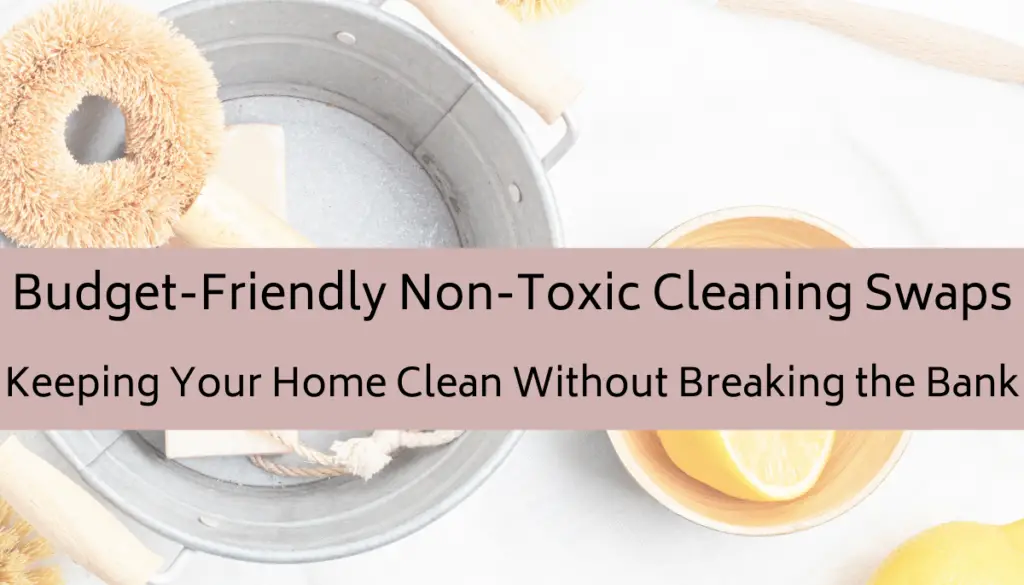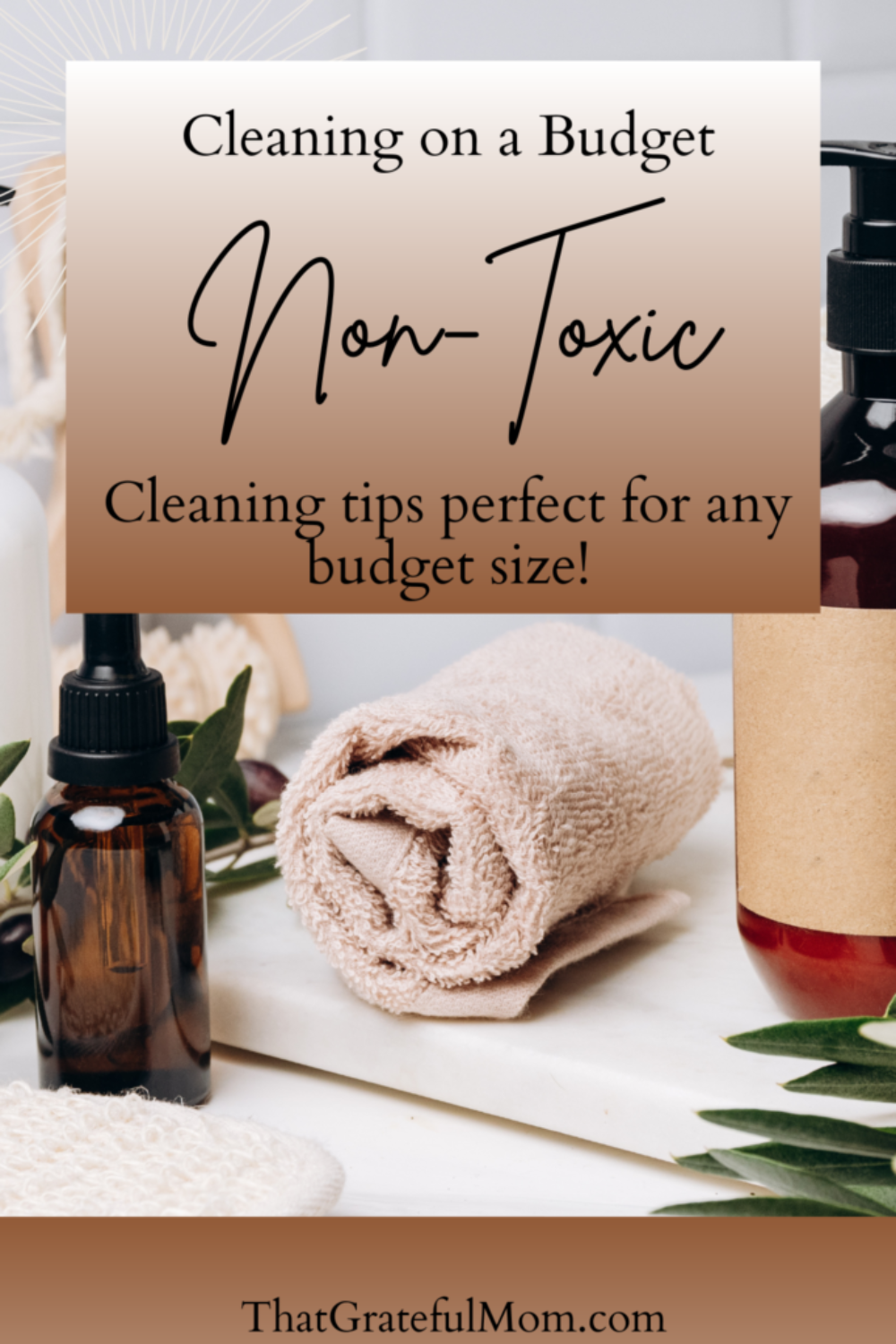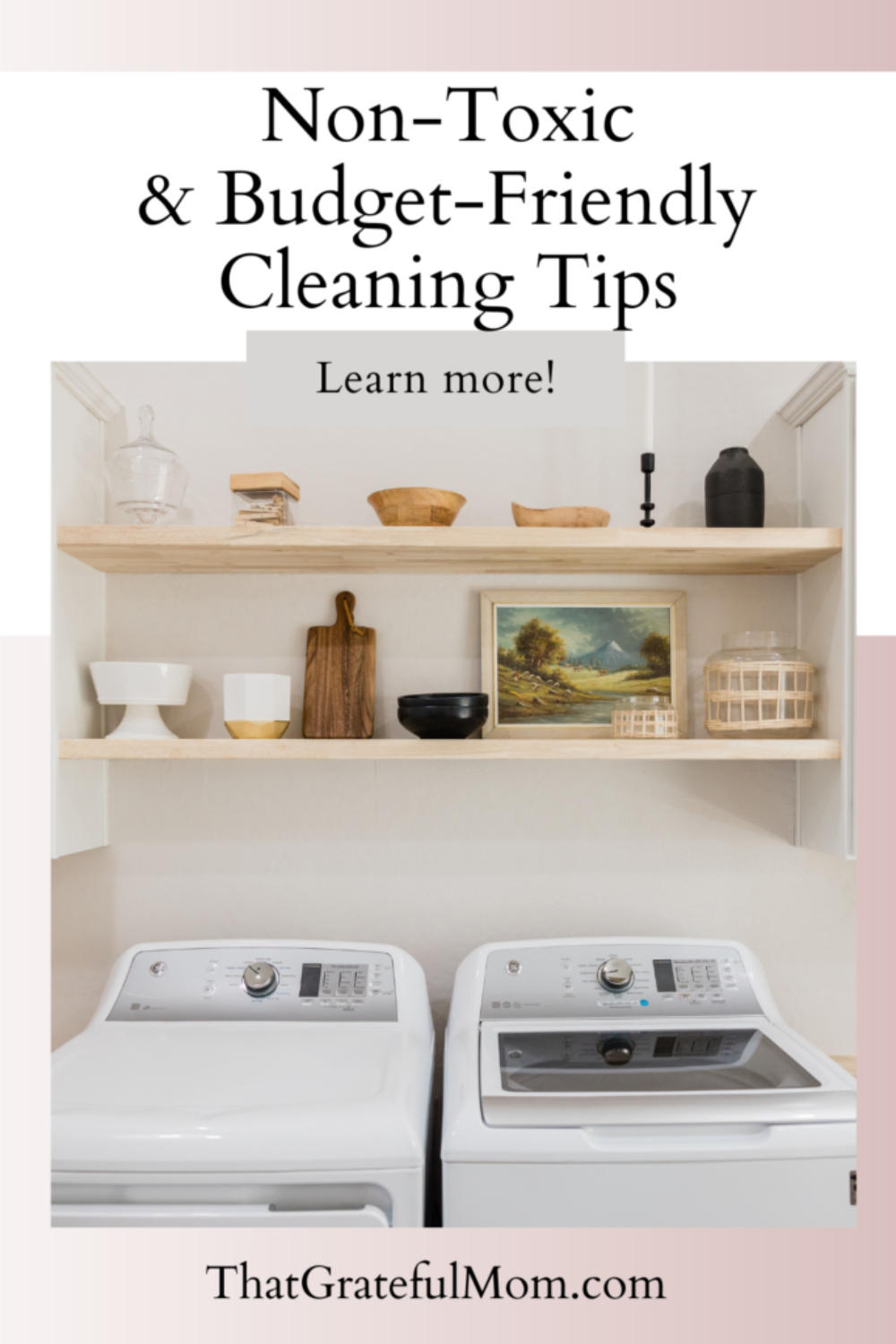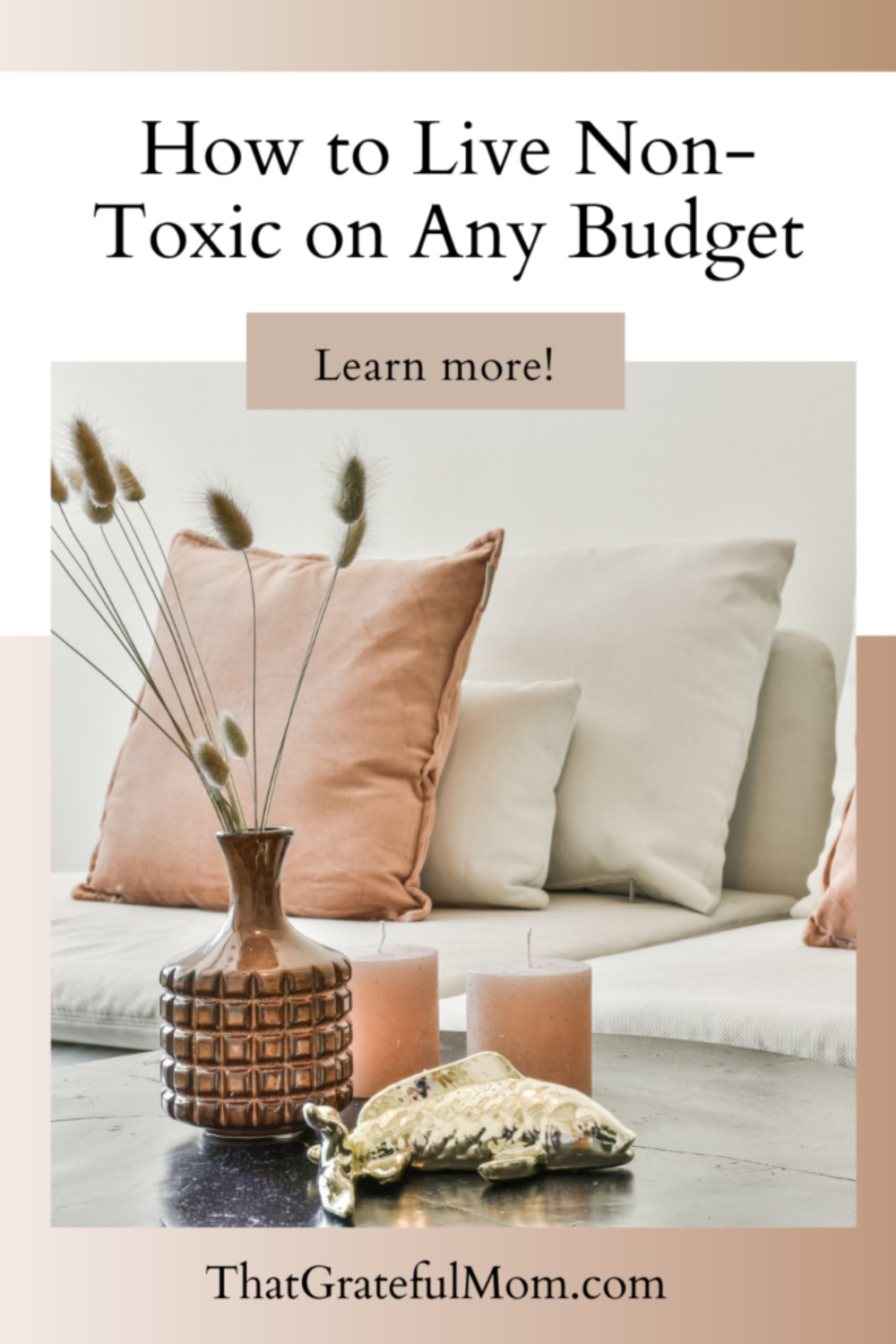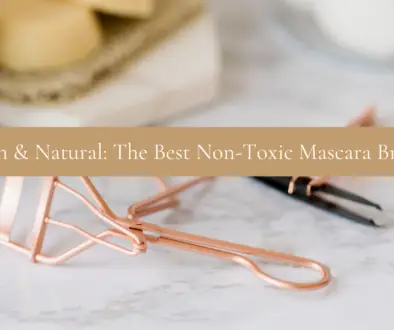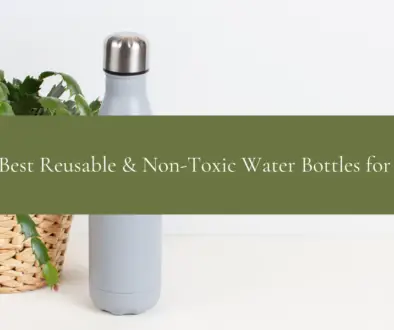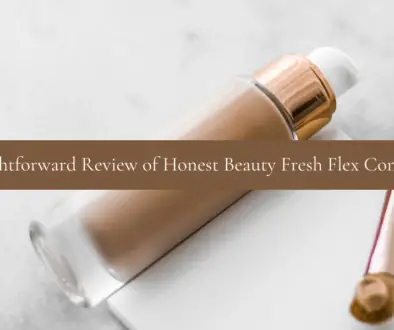Budget-Friendly Non-Toxic Cleaning Swaps
Keeping your home clean without breaking the bank
Many hear ‘non-toxic’ and instantly think ‘expensive.’ And it absolutely can be; If you let it! In today’s post, I’d like to review some simple, budget-friendly, non-toxic cleaning swaps you can make that’ll help you start living a non-toxic lifestyle on a budget!
If your budget prevents you from starting your non-toxic journey, the tips I will share with you today will help show you how to get started while maintaining your budget. Don’t let the fear of breaking the bank stop you from trying to improve your health.
If you’re interested in reading more of my non-toxic swaps, recipes, or tips, here are some of my most recent posts on these topics:
Three Non-Toxic Floor Cleaners for a Safer Home
Why We Choose to Live a Low-Tox Lifestyle
In this post, I’ll mention several tips on living non-toxic on a budget. We’ll also go over a few other things, such as the following:
- Areas to consider researching for non-toxic alternatives
- Some chemicals to watch out for in conventional products
- Budget-friendly non-toxic cleaning swaps
- Reusable over disposable
- Air fresheners
- Air quality
Please remember it can become overwhelming quickly when working on living a non-toxic lifestyle. My best advice is to take things slow. Don’t worry about everything all at once. That’s asking for disaster. Instead, choose one area of your life to focus on before moving on to other areas.
Okay, on to budget-friendly, non-toxic cleaning swaps! These tips are so helpful when first starting your non-toxic journey, and I hope this post helps encourage you to start looking at areas in your life that you could be working to make improvements!
Areas to consider researching for non-toxic alternatives
Toxins are in almost everything we purchase, use, wear, eat, and bring into our homes. It’s unfortunate, but if we can reduce these toxins by making safer decisions, we can help protect ourselves and our families from harm. When making swaps to cleaner alternatives, I find it easiest to list the areas of my life I want to research and choose one item at a time. For example, I made a list of areas, including beauty, hair care, personal care, cleaning, yard care, bedrooms, baby care, kitchen, and more. This blog post will cover a few budget-friendly, non-toxic cleaning swaps. If I were to go into every area of my life, this post would be far too long. In another post, I’ll go more in-depth on other areas, but for today, let’s focus on cleaning products.
Some chemicals to watch out for in conventional products
The following chemicals included in many conventional cleaning products are known to cause health issues like respiratory damage, asthma, lung damage, thyroid disruption, endocrine disruption, increased risk of cancer, and more.
We choose to avoid these to help reduce our risk of developing diseases and other health issues.
Ammonia:
Found in glass and window cleaners, bathroom cleaners, and oven cleaners, ammonia is a strong irritant to the eyes, skin, and respiratory system. Prolonged exposure can lead to respiratory issues, such as chronic bronchitis and asthma exacerbation.
Bleach (Sodium Hypochlorite):
Used in various cleaning products, including disinfectants and mold removers, bleach is a potent irritant to the skin, eyes, and respiratory system. It is also linked to an increased risk of developing cancer. Mixing bleach with other cleaners, such as ammonia or acidic substances, can produce toxic fumes that may lead to respiratory problems, eye irritation, and chemical burns.
Phthalates:
Often found in scented cleaning products, such as air fresheners and some multi-purpose cleaners, phthalates are known endocrine disruptors. They can interfere with hormone function, potentially affecting reproductive and developmental health.
Formaldehyde:
Present in some cleaning agents and air fresheners; formaldehyde is a known carcinogen. Prolonged exposure to formaldehyde can lead to respiratory issues, allergic reactions, and increased cancer risk.
Triclosan:
Used in antibacterial cleaning products, triclosan is an antimicrobial agent that can contribute to antibiotic resistance. It may also disrupt the endocrine system and lead to hormonal imbalances.
2-Butoxyethanol (Ethylene Glycol Monobutyl Ether):
Found in some window cleaners, degreasers, and carpet cleaners, 2-butoxyethanol is a solvent that can irritate the eyes and respiratory system. Prolonged exposure may damage the liver, kidneys, and blood.
Perchloroethylene (Perc):
Used in some spot removers and carpet cleaners, perc is a volatile organic compound (VOC) and a known neurotoxin. Prolonged exposure may lead to dizziness, headaches, and damage to the nervous system.
Sodium Hydroxide (Lye):
Found in oven and drain cleaners, sodium hydroxide is a caustic substance that can cause severe burns and irritation to the skin, eyes, and respiratory system.
Glycol Ethers:
Used in various cleaning products, glycol ethers are associated with adverse reproductive effects, including reduced fertility and developmental issues in offspring.
Chlorine:
Present in some toilet bowl cleaners and disinfectants; chlorine is a respiratory irritant. It can react with organic matter to produce harmful chlorinated compounds.
It’s important to be cautious when using cleaning products and to follow instructions carefully. Proper ventilation and protective gear can also help reduce exposure to harmful chemicals while cleaning. Opting for eco-friendly and natural cleaning alternatives can be a safer choice for your health and the environment.
Budget-friendly non-toxic cleaning swaps
We completely overhauled our cleaning products over 2 years ago and never looked back. It was one of the easiest decisions we ever made and has greatly impacted our health for the better. My husband and son both struggle with asthma and sensitivities to synthetic fragrances and when we transitioned to cleaner products, we instantly noticed a change in their health. It’s been so great to see. They don’t cough, sneeze, or get dizzy nearly as often as they had before we made the switch. Through that process, I have now realized just how sensitive I’ve become to synthetic fragrances since making the change to cleaner products, and now I get migraines when exposed to them for an extended period.
These products are some of my favorite safer choices when cleaning our home
Vinegar
We use vinegar more than any other cleaner in our home. Diluted and used as an all-purpose spray, window cleaner, floor cleaner, and even a stain remover for our clothes, the possibilities are endless. I buy 2 one-gallon bottles from Costco, but Amazon also offers it at a competitive price.
Baking soda
Instead of scrubbing products like Ajax, I like to use baking soda. It has the scrubbing power of Ajax or other similar products without harsh chemicals.
Castile soap
Like vinegar, castile soap has tons of uses. I like it best for cleaning floors. We also use it in bar soap form for our homemade laundry detergent.
Steamer
I have recently discovered how amazing a steamer is, and I’m so glad I have one! I’ve used a steam mop in the past and love that, but I also use a handheld steamer for disinfecting counters, walls, cleaning our doors, and floorboards. I bought mine on Amazon, and it came with a bunch of attachments for different uses.
Using steam is a great way to clean your home with literally zero chemicals. It’s also the most budget-friendly cleaning swap you could make because you already have water on hand. After purchasing the steamer, it will pay for itself over time the longer you use it! And yes, steamers can get hot enough to disinfect, so remember to keep it out of the reach of little hands.
Young Living Thieves
I absolutely love Young Living. There are some products that I use daily and probably always will. I know some people are completely again MLMs and essential oils, but their CBD roller helped me get through the anxiety of my son’s bone marrow transplant 2 years ago. I still use it almost daily, and I love how much it helps me relax when I’m anxious or stressed.
A bottle of Thieves concentrate is around $30, but when diluted properly can make around 30 bottles of cleaner! That’s $1 per bottle of cleaner! You cannot beat that unless you make your own with vinegar or castile soap. The scent is very pleasant, and it’s safe for children, so there is no worrying about kids getting into your cleaning products. (I think this goes without saying, but always, ALWAYS make sure your products are locked up.)
Reusable over disposable
One way we make non-toxic living for our budget is to look at items we can reuse. For example, instead of using disposable mop pads, we use a spin mop like this one and purchase new mop heads 2 or 3 times a year. They last a long time, can be washed in hot water in our washer, and then air dried before the next use. They help us save money, and they clean much better, in my opinion.
Another example of reusable products we choose over disposable is washcloths over paper towels. We realized how expensive our habit was getting, so we switched to microfiber cloths for wiping windows and mirrors and reusable hand towels for drying our hands. We simply dry our hands and toss them in the wash to be cleaned. There’s less waste, and we’ve saved money in the process.
Air fresheners
I know I mentioned this previously, but my husband and son both struggle with synthetic fragrances and since moving away from them, I have also realized how much I struggled. Having a clean-smelling home is wonderful, but not at the cost of our health. I have learned that using a diffuser with essential oils is a great way to have a fresh-smelling home without the potential migraine that often accompanies synthetic fragrances. Using essential oils is so nice because there’s no heaviness that so often happens with plug-in and spray fresheners. I never feel dizzy, and I can choose anything from citrus to vanilla to cinnamon to lavender, depending on my mood or time of the year!
I use Young Living products, and this bundle includes some of my absolutely favorite scents for diffusing. Diffusers are also very affordable, starting around $29 for one like this, but my absolute favorite is the Aria diffuser. It is so beautiful, it can play calming sounds, and you can control the color. Worth every penny!
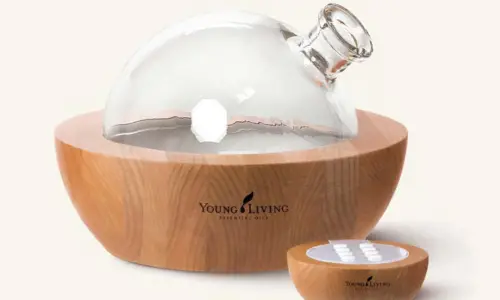
The Aria diffuser. So beautiful!
Air quality
Another area to consider researching is your air quality. If you’re in an area where you can open your windows throughout the day, this is the absolute best option, but for people who live in areas where the weather is cold, or the air quality is poor, using an air purifier is the best alternative. There are plenty of options out there for different price ranges, so don’t let finances be what holds you back.
Here are a few of my favorite brands
AirDoctor– We’ll call this the bougie option. We have one of these on our main floor, and it is incredible. They were not cheap, but we purchased them during a Black Friday sale and got a second purifier for free!
Loytio– These go on sale several times a year and are great for smaller rooms. If you want them for your entire home, you’ll need to buy a few, but for under $100, this is a great option. A few models even have night lights and aromatherapy options included.
Levoit– These purifiers are great for spaces up to 1,095 sq. ft making them perfect for small apartments, open concept living spaces, or buy a few and place them throughout your house. Also under $100, the filters must only be replaced every 4-5 months. This brand also offers larger models that work in spaces up to 3,175 sq. ft.
When looking at air purification systems, ensure they have a high rating, replaceable filters, and can filter out smoke, pollen, dander, and VOCs. One thing I really love about the Airdoctor is that it has multiple filters and can help purify the air from the COVID-19 virus. You can read more about those studies here.
Don’t overlook air quality when cleaning up the products you use in your home. This is a great way to help rid your home of toxins with little effort after setting up your filtration systems!
Conclusion:
Cleaning your home shouldn’t mean exposing yourself to harsh chemicals or harmful ingredients. These budget-friendly, non-toxic cleaning swaps will help you clean up your home without breaking the bank. By being conscious of the products you use, opting for DIY alternatives, embracing natural alternatives, improving indoor air quality, and adopting minimalism, you can create a non-toxic haven for yourself and your loved ones. The journey towards a healthier and sustainable lifestyle begins with small steps and informed choices, so let’s take the first step together and embrace non-toxic living on a budget.
I hope this post has encouraged you to start making sustainable changes in your own home. Please remember to share this post with a friend and pin it to your favorite board on Pinterest!
I am so glad you are here!
-M
This site may contain links to affiliate websites including Amazon. I may receive an affiliate commission for any purchases made by you through Amazon or other potential affiliates and no additional cost to you. Thank you for your support.

